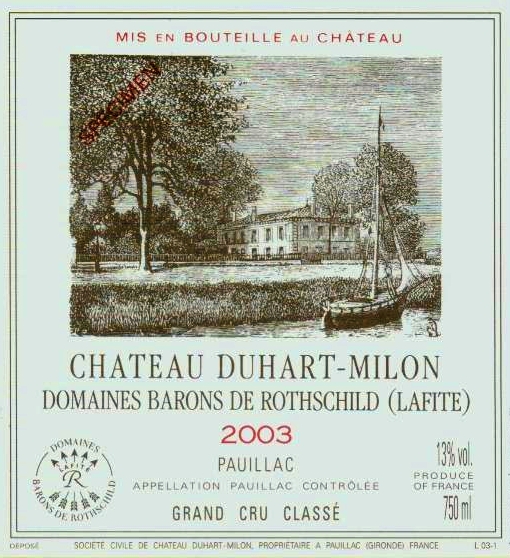The Wonderful World Of Bordeaux
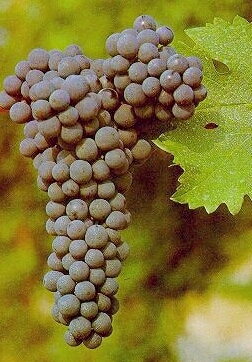 Cabernet Sauvignon |
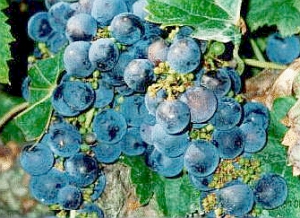 Merlot |
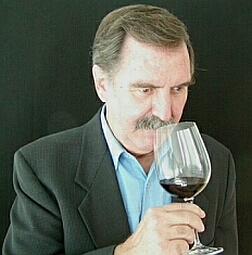 Wino |
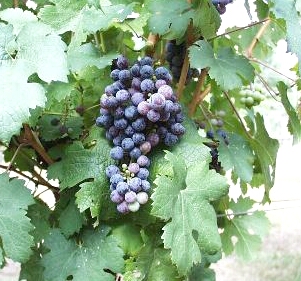 Cabernet Franc |
|
So
far,
I have out-lived two doctors who said wine was going to kill me.
To those of you who have read the other pages in my Wine Stuff section, you are aware that my wine of preference is Bordeaux. The wines range from a soft, smooth light-medium body to a robust, tannic, acidic, full-bodied wine. And none of that is by accident. Each and every Appellation d'Origine Contrôlée (A.O.C.) Château meticulously and deliberately blend and formulate their wines to reveal the greatest characteristics of this vintage’s grape. The payoff is wonderful for both the little old winemaker and the little old winedrinker, for the finest wines in the world consistently come out of the extraordinary region known as Bordeaux. On this page we will touch lightly on the region, its geography, sub-regions, appellations and châteaux. The discussion will be light, simply because my knowledge is light, but I will pass along some of what I think I know. In addition, I will pass along my interpretation of how to pronounce those words with which I have trouble and suspect some of you may too. The
major wine terriors, or regions, of France are illustrated in the
graphics
below
|
| Region |
What
They Grow |
| Alsace | Riesling,
Gewurztraminer, Pinot
Gris-Blanc
&
Noir, Muscat, Sylvaner |
| Bordeaux |
Cabernet
Sauvignon,
Merlot,
Cabernet
Franc, Malbec, Petit Verdot, Sémillon, Muscadelle, Sauvignon Blanc |
| Burgundy |
Pinot
Noir,
Chardonnay,
Gamay, |
| Champagne |
Chardonnay,
Pinot Noir,
Pinot
Meunier |
| Cognac |
Ugni
Blanc,
Colombard, Folle Blanch (not
considered a wine
region) |
| Languedoc
& Roussillon |
Cabernet
Sauvignon,
Merlot, Syrah,
Chardonnay,
Viognier, Sauvignon Blanc |
| Loire | Muscadet, Sauvignon Blanc, Chenin Blanc, Chardonnay, Cabernet Sauvignon, Cabernet Franc, Pinot Noir |
| Provence
& Corsica |
Chardonnay,
Pinot Noir |
| Rhône | Syrah,
Grenache,
Mourvèdre,
Cinsaul, Viognier, Marsanne, Roussanne |
| Each
major region has famous and very important sub-regions called
appellations. For example, Burgundy has sub-regions
Beaujolais,
Pouilly-Fuissé, Puligny-Montrachet
and Chablis which are internationally renowned for the outstanding
wines
they produce. The Rhône has Côte-Rôtie,
Hermitage,
Côtes
du Rhône and, of course, Châteauneuf-du-Pape. Bordeaux however, has the most celebrated and famed group of sub-regions and appellations in the world. Even the sub-regions have sub-regions. The
sub-regions of Bordeaux are
illustrated in the graphic below.
|
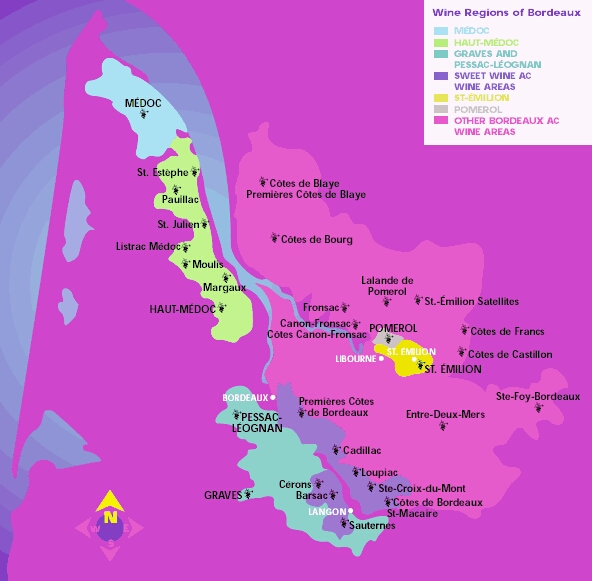
| Bordeaux
(bore DOE) is the largest and most famous fine wine region in
the world. It has more than 284,000 acres under the legal
governing of the
Appellation d'Origine Contrôlée. (AOC) (Ah pell ah
see on
Daw
ree jeen Cohn troll lay). AOC means "controlled name of origin." A set of strict and enforced French laws that specify wines by geographical origin and minimum conditions of production. There are nine growing regions and 57 appellations in Bordeaux. Theoretically, the more specific the appellation, the better the wine. From general to specific, appellations are as follows: Bordeaux, Bordeaux Supérieur, district name (such as Médoc (may dock) or Pomerol (paw muh rall), commune or village name such as Margaux (mar go) or Pauillac (poy yock) and finally, right down to the Château (shot toe) such as Château Lafite-Rothschild or Château Latour. In the Bordeaux wine-producing region, Château, sometimes labeled Clos (cloe), Cru or Domaine specifically refers to a vineyard of an AOC regulated size that has winemaking and storage facilities on the property. Château-bottled wines, "mis en bouteille au château" which is on the label means the wines were bottled at the Château. There are over 9,000 individual châteaux and over 13,000 wine growers in Bordeaux. The term "Grand Vin" is used in Bordeaux to indicate a châteaux “first label” or best wine they produce. Many of the 9,000 châteaux have a second, sometimes even a third, label in addition to their first label. This results in nearly 20,000 different bottled choices of Bordeaux providing the wine lover a virtual infinite selection to choose from in every quality and price range. When a château uses a second or third label, they are not permited to place their region, appellation or sub-appellation on the label. Instead, they must use a generic "Bordeaux" label. The enormity of the selections available insures the eternal absence of a Bordeaux "Expert.” To put it in perspective, if you purchased one bottle of everything and then drank one bottle a day, every day, it would take you 54 years to reach the last one. However, there are a few things you can do to become "knowledgeable" to insure that when you visit your local wine merchant you will walk away with the most enjoyable wine that accommodates your budget. Bordeaux is a blended wine. There are three grapes that make up the blending, Cabernet Sauvignon (cab er nay sew veen yon ), Merlot (mare low) and Cabernet Franc (fronk). (The AOC also permits two additional wines as a blending agent and they are the rarely used Malbec (mall beck) and Petit Verdot (peh tee vare doe). Your first major step is, through practice, to determine if you prefer "Left-Bank" "Cabernet Dominant" wines or "Right-Bank" "Merlot Dominant" wines. The sub-regions of Bordeaux are divided by the rivers the Dordogne (dar done) and the Garonne (gaw rawn), and the regions on the West side "Left Bank" of the rivers and the East side "Right Bank" of the rivers produce distinctly different wines. The Cab dominant wines will be fuller-bodied, more tannic and powerful wines. The Merlot dominant wines will be more medium-bodied, silky, with smoother tannins. And the 50/50 wines will be somewhere in between the two. Basic wine stuff. The second major step is to determine which region, or appellation, of the Left or Right bank you prefer. This is good time for an overview of the appellations. |
| APPELLATION | GRAPE DOMINANCE |
FAMOUS CHATEAUX |
| Médoc
and Haut Médoc |
Cabernet Sauvignon | Château Cantemerle, Château la Lagune, Château Sociando-Mallet, Château La Tour-Carnet |
| Margaux | Cabernet Sauvignon | Château
Margaux, Château Palmer, Château Brane-Cantenac, Château Durfort-Vivens, Château Giscours |
| Pauillac | Cabernet Sauvignon | Château Lafite-Rothschild, Château Mouton-Rothschild, Château Latour, Château Sociando-Mallet |
| Saint Estèphe | Cabernet Sauvignon | Château
Calon-Ségur, Château Montrose, Château Cos
d’Estournel, Château Cos Labory, Château Lafon-Rochet |
| Saint Julien | Cabernet Sauvignon | Château
Ducru-Beaucaillou, Château Lagrange, Château Léoville-Las Cases |
| Pomerol | Merlot | Château Petrus, Château Lafleur, Château Trotanoy |
| Saint Émilion | Merlot | Château
Figeac, Château Beauséjour-Duffau-Lagarosse, Château Cheval Blanc, Château Aausone, Château Pavie |
| Graves |
Cab/Merlot 50/50 | Château Haut Brion, Château Pont de Brion, Château de La Brède |
| Pessac-Leognan | Cab/Merlot 50/50 | Château Haut Brion, Château La Mission-Haut-Brion, Domaine de Chevalier,Château les Carmes Haut-Brion |
| Entre-Deux-Mers | Cab/Merlot 50/50 | Red wines produced from the Entre-Deux-Mers region are sold as Bordeaux AC or Bordeaux Supérieur AC. |
| Sauternes | Sweet Whites | Château d'Yquem, Château de Malromé |
| If
you can
commit these appellations to memory, and the
types of wines
they
produce,
you're most of the way there. The third step is finding your preferred appellations. This will take time, patience and a lot of concentration. Let's go over the appellations listed above. The sterling reputation of Bordeaux is built mostly on the red wines produced in the Médoc, and especially the Haut Médoc, which include the communes of Pauillac, Margaux, Saint Julien (sont jew lee ann) and Saint Estephe (sont es teff). Over the years, I have learned to favor these wines. Sadly, the château labels listed in the above chart are not in my wine rack or in my budget. Only in my dreams. Médoc (and Haut-Médoc) (left bank) (40,000 acres) is the most famous region in Bordeaux. Its wines are ruby colored, with aromas and tastes of concentrated plum, earth, oak, and spice, with good balance, firm tannins and a dry finish. Margaux (Haut-Médoc) (3,250 acres) area soil is generally lighter and finer, which translates into more elegant, subtle wines. The Margaux AC has twenty-one cru classé châteaux, more than any of the other Médoc commune appellations, and one premier cru, Château Margaux. Pauillac (Haut-Médoc) (2,400 acres) (my personal favorite) wines have the same intense fruit, but exhibit a darker color, more garnet than ruby. They also have a slightly metallic hardness. These are more powerful, tannic, acidic, masculine, forceful wines that tend to be harsh when young but are magnificant when they age. The AC has three of the five premier cru châteaux. Château Lafite-Rothschild, Château Mouton-Rothschild and Château Latour and fifteen other cru class châteaux. Saint Estèphe (Sont Es TEPH) (Haut-Médoc) (3,100 acres) wines are full-bodied wines with the same concentrated fruit and famously firm tannins. The wines from Saint-Estèphe AC are usually ranked fourth in quality after those of Margaux, Pauillac, and St. Julien. This ranking is because Saint-Estèphe contains fewer (only five) grand cru class châteaux. Saint Julien, (Haut-Médoc) (2,200 acres) the smallest appellation of the Médoc, contains slightly more clay in the soil, and this is reflected in the richer wines that come from this area. Generally considered to produce the most consistently high-quality wines of any appellation in the Bordeaux region. It contains eleven cru classé châteaux, which use about 75 percent of the available vineyard land, and a large number of very good cru bourgeois châteaux. This leaves a small amount of land for the low quality wineries meaning that if you select a label with a St. Julien AC you should have a very nice wine.Pomerol
(right
bank)(1,800 acres) soil consists of flint, clay, gravel, sand, and
iron, resulting in wines that have a famous richness and display
concentrated fruit, but are still velvety soft. This is the
only
region in Bordeaux that does not have a rating system. The wines of
this appellation consist mainly of Merlot. Pomerol contains
the
famous
Château Pétrus which produces the most
expensive
and
celebrated wine in
the world. The
wine is a
Merlot,
however,
depending upon the vintage, they may add up to 5% Cabernet Franc.
Pétrus is considered by many
to be the
finest
wine in the world. The vineyard consists of only 30 acres and poduces
about
4,000 cases per year. Graves (grawv) vineyards are the oldest in Bordeaux and their wines have been exported for centuries. This is the only Bordeaux region that can claim to make three styles of wine: traditional Bordeaux reds, white, and sweet white. Premier cru Château Haut-Brion is located in the graves district of Bordeaux in what's now called the Pessac-Léognan. It's the only château outside of the Médoc to have been classified at all. Pessac-Leognan (peh sak Leh oh nye-ahn) A new appellation created in 1987 out of the northern part of the Graves area. Wines in this area were formerly part of the Graves AC, although the use of Graves-Pessac or Graves-Léognan had been allowed on labels for several years prior to the new appellation's approval. This northern part of Graves contains more of the desirable gravelly soil than the southern portion and generally makes superior wines. The AC takes in all the cru classé châteaux of Graves. This appellation's roster of châteaux is led by Haut-Brion, the only non-médoc château to be included in the classification of 1855. The area's white wines, which are produced from sauvignon blanc, sémillon and muscadelle, are made in a crisp, dry style. Entre-Deux-Mers (on truh duh murr) (Between Two Seas) With approximately 7,400 acres, is the largest subdistrict within Bordeaux. Red wines produced from the area are sold as Bordeaux AC or Bordeaux Supérieur AC. The Entre-Deux-Mers AC applies only to white wines made from muscadelle, sauvignon blanc, and sémillon (say me yon). Sauterne (soh teairn) is world famous for its "botrytised" sweet white wines. The wines are made from botrytised Sauvignon Blanc and Sémillon grapes. The Botrytis cinerea "noble rot" attacks the grapes causing them to crack and shrivel. The fungus pierces the skins in order to feed on the sugar and tartaric acid within. The grape dehydrates, concentrating the sugar that is left. The invading rot also changes the chemical composition of the remaining juices, producing glycerol, and the rich, buttery mouth feel that is the hallmark of a botrytised wine. Sauterne wines are classified as Premier Cru Supérieur (first great growth), Premiers Crus (first growths) and Deuxième Crus (second growths). WOW! Was that ever exciting! Now, if you're still awake and yearn to continue, we need to discuss what to do with all of this information. You now know the regions and the Bordeaux wine styles they produce. It's up to you to taste wines from each region, appellation and commune until you begin to develop preferences. The fourth step is to have a modest understanding of the Bordeaux rating system. Below is a chart for the Médoc ratings established in 1855. A very large number of people believe the chart is outdated and needs to be brought current. In the past 150 years I'm sure some Châteaux have improved the quality of their wines and should be upgraded and perhaps one or two of the original vintners have died off and the family may have neglected to give the loving care a Cru Château requires to remain superior. Click here to view the Official Bordeaux Cru Chart of 1855 complete with Châteaux. |
| The
Médoc 1932 Ratings |
|
| Premier
Cru |
First
growth
(only the "Big Five") |
| Deuxiemes
Cru |
Second
Growth (14 Châteaux) |
| Troisiemes
Cru |
Third
Growth
(14 Châteaux) |
| Quatriemes
Cru |
Fourth
Growth (10 Châteaux) |
| Cinquiemes
Cru |
Fifth
Growth (18 Châteaux) |
| Cru
Bourgeois
Exceptionnel |
(6 Châteaux) -
(2003 9 Châteaux) |
| Cru
Bourgeois
Supérieurs |
(99 Châteaux) -
(2003 87 Châteaux) |
| Cru
Bourgeois |
(339 Châteaux) -
(2003 151 Châteaux) |
| Cru
Artisan |
(no
longer
used) |
| Cru
Paysan |
(no
longer
used) |
| By
the way, here are
the
five Premier Cru First Growth Châteaux: Château
Lafite-Rothschild (Pauillac)
Château Latour (Pauillac) Château Margaux (Margaux) Château Haut-Brion (Graves) Château Mouton-Rothschild (Pauillac) June 17, 2003 The Alliance des Crus Bourgeois reclassified the Medoc Crus Bourgeois classifications. This is the first reclassification since 1932 and the Alliance has agreed to visit the listing again in twelve years. For a complete listing of the 247 Châteaux, please click here: https://www.davidstuff.com/wine/crusbourgeois.htm When selecting your wines, start with the Premier Cru and work your way down the chart if your budget is a consideration. In general, wines labeled with the individual village appellations, such as Pauillac AC or Margaux AC, are better than those labeled with the Haut-Médoc AC, which are better than those labeled Médoc AC, which are better that those labeled Bordeaux AC. Keeping that in mind, a Cru Bourgeois from Pauillac AC can be a wonderful value wine. The term "Cru Bourgeois" means "ordinary growth" or a wine without distinction. These wines do not command the premium prices of the higher classed, first to fifth growth wines, yet are still very enjoyable. And don't forget, an "ordinary" Cru Bourgeois from Pauillac would be considered an outstanding grape most anywhere else on Earth. There are exceptions of course. I have seen several Cru Bourgeois wines priced at $50. The fourth and one/half step concern the vintages. The vintages are important if you are purchasing a wine to cellar for a long period of time. By long, I mean two or more years. The Bordeaux Vintage Chart below suggests that if you purchased a 1992 vintage you would not want to cellar it. The 1995 and 1996 would be excellent choices. However, early samplings of 2000 is proving it to be the best vintage in the past twenty years. The 2000 wines are the ones you should be considering for your cellar. The Chart is useful if you are visiting your wine merchant and you have two vintage choices of the same Châteaux at the same price. You should pick the 1995 instead of the 1994 or the 1996 in place of the 1997. A final comment regarding vintages. In the year 2003, I would not buy any wine with a vintage of 1996 or earlier unless the wine was cellared. A 1996 is now eight years old and that is pushing the limit on even the great Crus. Also, if your wine merchant happens to be Safeway or Piggly Wiggly and the bottles are displayed/stored in an upright position, I would not purchase any wine with a vintage earlier than five years ago. The cork has probably not been in contact with the wine for a long period and the constant air-conditioning, while providing an excellent and consistent temperature for storing, will quickly dry the cork and permit air to enter the bottle. The bright lights illuminating the bottles, in some cases 24 hours a day, is also a negative factor. |
| Bordeaux
Vintage
Chart |
|||
| Year | Rating |
Year |
Rating |
| 1990 |
Excellent |
1998 |
Very
Good |
| 1991 |
Very
Good |
1999 |
Very
Good |
| 1992 |
Good
to Poor |
2000 |
Outstanding |
| 1993 |
Good |
2001 |
Very
Good |
| 1994 |
Very
Good |
2002 |
Very
Good |
| 1995 |
Excellent |
2003 |
Excellent |
| 1996 |
Excellent |
2004 |
Very
Good |
| 1997 |
Very
Good |
2005 |
Not
Yet Ready - Early Tastings=Outstanding |
Good = < 83 - Very Good = 84-89 - Excellent = 89-93 - Outstanding = 94-100
This Information is gathered from Wine Spectator, Tom Cannavan, Wine OnThe Web and Robin Garr
| The
Fifth
and final step is to begin the long and wonderful process of
tasting as many of the great numbers of wonderful Bordeaux wines to
choose from. If you are new to Bordeaux style wines, this
page
may seem a little perplexing because of the copious amount of choices
available. Selecting a simple Cabernet Sauvignon involves
deciding which region you prefer, France, California, Chile, Argentina
and so on. From there you narrow it down to the appellation and finally
to the winery. The same is true with Merlot, Chardonnay and many
other variatels. But
the
enormous number of selections available, coupled with the significant
differences
in the châteaux wines, makes the Bordeaux selection process
rigorous
indeed. On the plus side, this is not like a sharp stick in
the
eye.
The pursuit is wonderful. The challenge is
terrific.
Pleasures
abound and the final goal, alas, is always one vintage away. This
is The Wonderful World of Bordeaux.
A final note. Wine is an extremely individual pleasure and rarely do I recommend any wine to anyone. It’s just too personal. My elixir may be your swill. With that caveat injected, if you are new to Bordeaux and wish to try a bottle or two to satisfy your curiosity, may I suggest a Château Lafite-Rothschild, Pauillac AC-$500 - $2,500, vintage sensitive. That is a guaranteed winner if you like a Bordeaux wine. I hope your wallet is bigger than mine. For a less expesnive label: Château Margaux Margaux AC-$500 - $1,600, vintage sensitive. Château Mouton Rothschild, Paulliac AC-$500 - $1,000, vintage sensitive. Château Montrose, Saint Estèphe AC-$100 - $300, vintage sensitive. Château Lagrange, Saint Julien AC-$50 - $80, vintage sensitive. Château La Tour De Mons, Margaux AC-$35 My personal favorite is Château Duhart-Milon, Domaines Barons De Rothschild (Lafite), Pauillac. AC-$80. |

Please email me with your suggestions, comments or criticisims
| Did
You Know? |
Appellation d’origine contrôlée = controlled area of origin Bouteille = boo TAY = Bottle châteaux = plural for château cru bourgeois = ordinary growth Dordogne - dor dog NEE = dar GUN Elevé en fûts = Barrel aged Entre-Deux-Mers -ontra DE mare = Between Two Seas Gironde = gee ROND Garonne = gahRON mise en bouteille = put in bottle Mouton Cadet = moo tohn cah day propriétaire-récoltant -- owner-harvested (QWPSR) = Quality Wine Produced in a Specific Region Sous-région = sub region (Bordeaux = Médoc) Terrior = tare WAH = terrain-land-soil-climate vin de pays = wine of the country (local) vin de pays d'Oc = wine of the country vintage = the year the grape was harvested V.S.O.P. = Very Superior Old Pale V.S. = Very Special X.O. = Extra Old |
